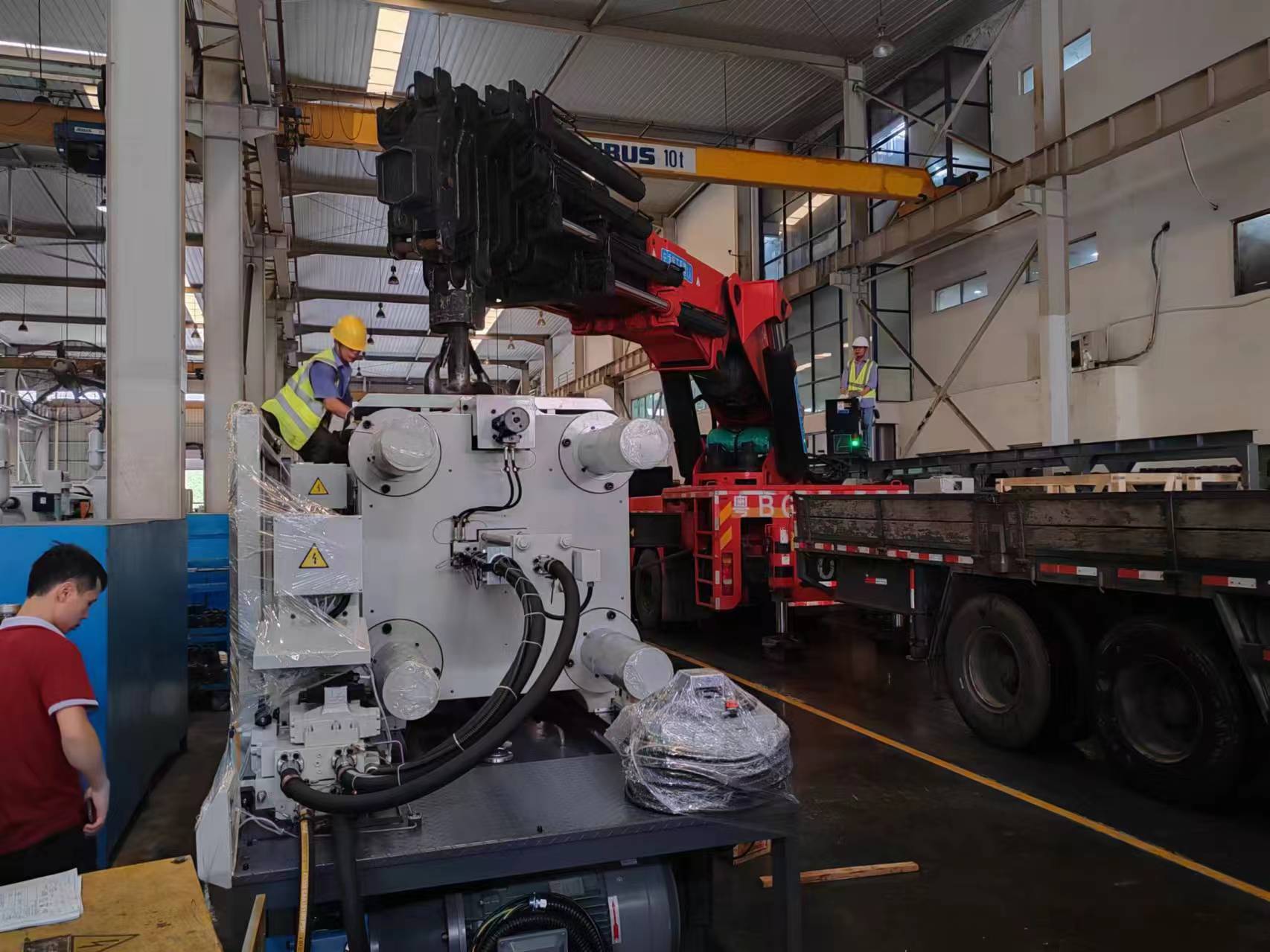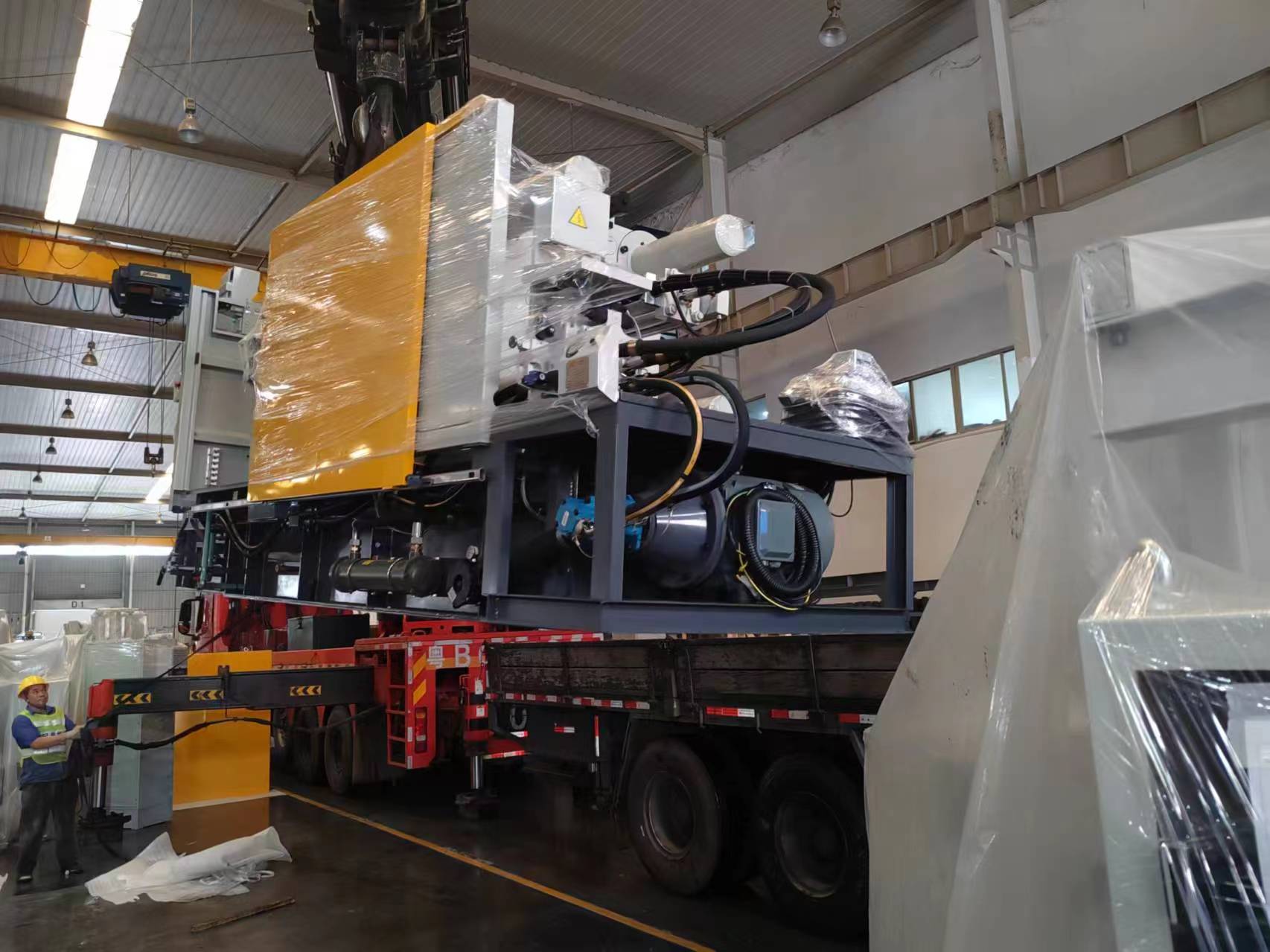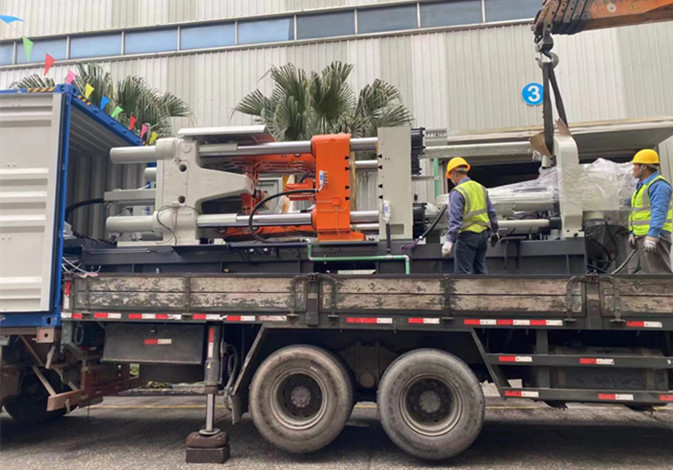Nodular Cast Iron Applications
LK Die Casting Machine / 2024-09-09 15:27:48
2024-09-09 by Cherry
Introduction
Ductile iron is a material known for its excellent
strength and toughness. It is widely used in many
industries such as automobiles, pipelines, and
construction.
Die-casting machines are important equipment in the
manufacturing field, mainly used for rapid and large-scale
production of precision parts. At first glance, ductile
iron and die-casting machines seem to be two separate concepts.
After all, the die-casting process is usually suitable for
materials with lower melting points such as aluminum, zinc,
and magnesium. However, with the advancement of manufacturing
technology, the application of ductile iron in die-casting
machines have received more and more attention.
This article will explore the potential application of ductile
iron in die-casting machines and analyze the feasibility and
prospects of combining the two.

What is ductile iron?
Ductile iron is a cast iron material that obtains spheroidal
graphite through spheroidization and inoculation. It combines
the advantages of good casting properties of cast iron and
the high strength of steel. Ductile iron is a cast iron
material with excellent mechanical properties. Unlike traditional
gray cast iron, the graphite in ductile iron is spherical, not
flake.
This structural feature gives it higher toughness and
strength and can withstand greater tensile and impact forces.
Therefore, ductile iron is widely used to manufacture parts that
require high strength, wear resistance, and certain ductility, such
as automotive engine parts, pump housings, pipes, and die-casting
machine molds.
Since the mold needs to withstand high temperatures,
high pressure, and repeated impact and friction during the die-casting
process, molds made of ordinary materials are prone to wear,
deformation and even cracking. The molds are made of ductile iron
have higher strength and toughness, can better withstand harsh
conditions during the die-casting process, and effectively extend
the service life of the mold.
From the perspective of the die-casting process, ductile iron has
relatively good fluidity. This allows the ductile iron liquid
to fill the complex cavity structure more smoothly during the
process of the die-casting machine filling the mold cavity with
molten metal, reducing the occurrence of casting defects such
as pores and shrinkage.
Moreover, the thermal conductivity of ductile iron is relatively
low, which helps to maintain the temperature uniformity of the
molten metal in the mold to a certain extent, which is conducive
to obtain castings with more stable quality.
The key advantages of ductile iron are its good mechanical
properties, relatively low production costs, and good machinability.
This makes it an economical alternative to steel in many industrial
applications.

The role and working principle of die casting machine
A die-casting machine is a device that forms metal parts
by injecting molten metal into a mold and cooling it quickly.
The die-casting process is usually used to manufacture metal
parts with precise dimensions and smooth surfaces. Due to
the high efficiency of die casting, it has been widely used
in industries such as automobiles, electronics, aerospace, etc.,
especially for the production of low melting point metals such
as aluminum, zinc, and magnesium alloys.
The core of the die-casting process is to use high pressure
to inject molten metal into the mold and quickly
cool it to form the parts. This process can achieve extremely
high production efficiency and good surface quality of the
finished product. However, due to the relatively high melting
point of ductile iron and the longer cooling process, it is
not traditionally used in the die-casting process.

Challenges of ductile iron and die casting machine
Although ductile iron has good mechanical properties, its
application in die-casting machines faces some technical
challenges. When using ductile iron for die-casting machine
production, some issues should also be paid attention to.
For example, the process control of spheroidizing treatment
needs to be precisely grasped to ensure that graphite can
be fully spheroidized, otherwise, it will affect the performance
of the material. At the same time, the settings of parameters
such as temperature and pressure during the die-casting process
also need to be optimized and adjusted according to the
characteristics of ductile iron.
1. Melting point and cooling time
The melting point of ductile iron is between 1150°C and 1300°C,
which is much higher than metals commonly used for die-casting,
such as aluminum and zinc.
Die-casting machines are usually used for low-melting-point
materials because the higher melting point not only increases
the wear of the equipment but also requires the mold to
withstand higher temperatures, which affects the life of the mold.
At the same time, ductile iron takes a long time to cool and
cannot be formed as quickly as aluminum alloys, which reduces
the production efficiency of the die-casting machine.
2. Material performance requirements
The strength and toughness of ductile iron come from its graphite
spheroidization structure, which is very sensitive to cooling
rate. If the cooling speed is too fast during the cooling process,
the graphite morphology may not be formed correctly, resulting in
a decrease in the performance of the material.
The die-casting process usually requires rapid cooling,
so how to control the cooling rate to retain the characteristics
of ductile iron is a technical problem.
3. Mold Wear and Cost
In die-casting machines, molds are subjected to high temperatures
and high pressures. For high melting point materials such as
ductile iron, the design and manufacturing costs of the molds
are greatly increased. In addition, the mold material also
needs to have extremely high heat resistance and wear resistance,
otherwise, it can easily be damaged during frequent high-temperature
operations, increasing the replacement and maintenance costs of the mold.
Potential Application of Ductile Iron in Die Casting Machines
Although there are challenges in combining ductile iron with die
casting, with the advancement of technology, some new die-casting
processes have begun to explore the application of ductile iron
in die-casting machines. The following are several potential
solutions and application scenarios:
Semi-Solid Die Casting Process
Semi-solid die Casting is a technology between traditional die
casting and casting processes. The process heats the metal to a
semi-solid state and then forms it through a die-casting machine.
Ductile iron can retain its excellent mechanical properties in
this process due to its special graphite structure. At the same
time, the semi-solid process can reduce the melting temperature
and reduce the wear of the mold. This provides new possibilities
for the application of ductile iron in die-casting machines.
Combination of heat treatment processes
For the cooling process of ductile iron, the subsequent heat
treatment process after the die-casting machine can ensure the
stability of the material's organizational structure. For example,
after rapid die-casting, ductile iron parts can be annealed or
quenched to improve their toughness and strength. This not only
retains the efficient production characteristics of die-casting
but also ensures the material properties of ductile iron.
Development of high-temperature die-casting machines
With the development of materials science, die-casting machines
for high-melting-point materials are gradually being developed.
This type of equipment can withstand the high-temperature operation
of ductile iron by using high-temperature resistant alloy molds
and advanced cooling systems. Although the cost of this equipment
is relatively high, the application of ductile iron in die-casting
machines will be very attractive for the production of certain
precision parts that require high-strength materials (such as
large mechanical parts or key structural parts).
Application prospects of ductile iron in future die-casting machines
With the acceleration of automation and intelligentization
process of the manufacturing industry, the combination of ductile
iron and die-casting machines have broad prospects. Through technological
innovation, especially the progress of materials science and casting
technology, the performance of ductile iron can be further
optimized to adapt it to the die-casting process.
Application in the automotive industry
In the automotive industry, the demand for lightweight and
high-strength materials continues to grow. Although aluminum
and magnesium alloys are widely used due to their lightweight,
ductile iron is still an irreplaceable material for some
high-load components. The rapid production of ductile iron
parts by die-casting machines will greatly improve the
production efficiency of automobile manufacturing and reduce costs.
Construction and infrastructure fields
Due to its excellent durability, ductile iron is widely used
in infrastructure such as pipelines and building support
structures. If these high-strength components can be produced
quickly and in batches using die-casting machines, the
manufacturing efficiency of the entire construction industry
will be significantly improved.
Promoted by emerging manufacturing technologies
With the rapid development of emerging technologies such as
3D printing and additive manufacturing, ductile iron may
be able to combine the high-speed production characteristics
of die-casting machines in the future to form a more efficient
manufacturing process. This will provide more possibilities
for diversified product manufacturing and personalized production.
Conclusion
Due to its superior mechanical properties and low cost, ductile
iron has become an ideal material for many industries. Although
the application of ductile iron in traditional die-casting
machines face technical challenges, this combination has
broad development prospects in the future through the development
of new processes and the upgrading of die-casting machine technology.
The combination of semi-solid die-casting, high-temperature die-casting
machines and heat treatment processes are all potential directions
for achieving ductile iron die-casting.
In the future, with the continuous advancement of manufacturing
technology, the application of ductile iron in die-casting machines
will become a reality. This will not only greatly improve production
efficiency, but also reduce manufacturing costs, and provide high-strength
and durable parts for multiple industries.
Whether in the automotive industry, building infrastructure,
or other fields, the die-casting process of ductile iron will
bring breakthroughs and possibilities to modern manufacturing.
For more info, you can refer to:
https://www.tiktok.com/@lk_diecastingmachine/video/7405113006880820522
https://www.youtube.com/shorts/JLX410QV_kw
To learn further info about Die Casting Machines,
pls contact LK Die Casting Machine Authorized Official Agent
LK OFFICIAL AGENT OFFICE DCM
LK Die Casting Machine Authorized Official Agent for Egypt(EGY)
Saudi Arabia(ksa)
United Arab Emirates(UAE)
The Islamic Republic of Iran(Iran)
Qatar(QAT)
The State of Kuwait(Kuwait)
The Middle East
Address: 1. Industry Zone, South of Port Said Kebly, Cairo, Egypt
2. EX 14., EASTERN RING ROAD, AI RAYAN DISTRICT,
RIYADH, SAUDI ARABIA
Arabic Website: https://ae.zazdiecasting.com/
English Website: https://www.zazdiecasting.com/
Phone/WhatsApp/Wechat: 0086 13598704163
Mobile: +20 101 304 3317 +20 150 181 8310
Email: jack@zazmae.com ahmedmahmoud@zazmae.com
OTHER CONTENT
-

2024-09-19 14:16:15 LK Cold Chamber Die Casting Machine DCC900 Locking Force: 9000KN Die Height: 400-1000mm Space Between Tie Bars: 930x930mm Shot Weight: 13.5Kg Casting Area Max:2250c㎡
More -

2024-09-19 14:11:06 LK Cold Chamber Die Casting Machine DCC280 Locking Force: 2800KN Die Height: 250-650mm Space Between Tie Bars: 560x560mm Shot Weight: 2.9Kg Casting Area Max:700c㎡
More -

2024-09-19 10:23:07 LK Cold Chamber Die Casting Machine DCC580 Locking Force: 5000KN Die Heigh: 350-850mm Space Between Tie Bars: 760x760mm Shot Weight: 6.9Kg Casting Area Max:1250c㎡
More -

2024-09-19 10:11:20 LK Cold Chamber Die Casting Machine DCC400 Locking Force: 4000KN Die Height: 300-700mm Space Between Tie Bars: 669x669mm Shot Weight: 4.7Kg Casting Area Max:1000c㎡
More

